Solar energy systems
Solar energy systems are among the greatest inventions of the 21st century, at least in terms of efforts for cleaner renewable energy.
They enable us to achieve things such as reducing electricity bills and even energy independence. No wonder solar energy systems are becoming an increasingly interesting topic.
If you are inquisitive or just looking for a way to save money and be more energy-independent, you are in the right place: the Solar Energy Systems category in the Elmark Holding online store.
Here we will not only offer you great solar energy systems to power your home, villa or country house, but we will also dive deeper into the world of solar energy systems and give you a more detailed overview so that you know what you are buying and what you can get from them.
What are solar energy systems?
Solar energy systems, also called photovoltaic systems, are a power supply system designed to provide electricity converted from solar energy by means of the photovoltaic effect.
A solar energy system is made up of several components making up a circuit that captures and converts solar energy, then stores it in the form of electricity and makes it available for domestic use.
Components of solar energy systems
When we talk about solar energy systems, most people only imagine solar panels. However, there are many components involved in building a solar energy system. These components include:
- Solar panels;
- Inverters;
- A system of racks;
- Wiring;
- Solar combiner boxes;
- Trip switches;
- Circuit breakers;
- Electricity meters.
Solar panels are made up of numerous solar cells with semiconductor properties encapsulated in material to protect them from the weather.
These properties allow a cell to capture sunlight, i.e. photons from the Sun, and convert their energy into useful electricity by means of a process called the photovoltaic effect.
On the other side of the semiconductor is a layer of conductive material that "collects" the electricity produced.
The sunlit side of the panel also contains an anti-reflective coating to minimise losses caused by light reflection.
The vast majority of solar panels produced worldwide are made up of crystalline silicon, which has a theoretical efficiency limit of 33% for converting solar energy into electricity.
An inverter is an electrical device that converts direct current into alternating current.
For solar energy systems, this means that the direct current from the solar array is fed into an inverter which converts it into alternating current. This conversion is necessary as most electrical appliances and devices use alternating current.
Inverters are key to almost all solar energy systems and are often the most expensive component after the solar panels themselves.
So-called racks, or frame systems, are the mounting supports for fixing the solar panel on the ground or the roof of a building.
Racks are usually made of steel or aluminium. They racks fix the solar panels mechanically in the right place with a very high level of precision.
Quality rack systems must be designed to withstand extreme weather conditions, such as hurricanes or tornados and heavy snowdrifts.
Another important function of rack systems is to earth the solar panels to prevent electric shocks when people approach them.
The other components of solar energy systems are standard electrical equipment such as circuit breakers, meters, wiring, etc., that distribute the converted electricity for domestic purposes.
Operating principle of solar energy systems
Now that we have explained in detail what a complete solar energy system looks like with regard to its individual components, we will describe the basic operating principle that allows solar energy to be collected and converted into electricity.
Basically, solar energy systems are like any other system that generates electricity. The difference lies in the equipment, which differs from that used in conventional electro-mechanical generating systems.
However, the principles of operation and interaction with other electrical systems remain the same, guided by a well-established set of electrical codes and standards.
Although an array of solar panels generates electricity when exposed to sunlight, a whole lot of other components are required to properly conduct, control, convert, distribute and store the energy produced by the panels that we mentioned above.
Once all the components are in place, the process of collecting solar energy and converting it into electricity can begin. The process is as follows:
Solar panels collect solar energy and use the solar cells to convert it into direct current. The latter passes through the inverter, which converts the direct current into alternating current that is suitable for use by most household appliances.
Once the current has been converted, it is stored in a battery block from where it can be used at any time.
The electricity can now be used to meet the needs of the connected household through a distribution system.
Where solar systems are most successfully used
Despite their innovative technology and the great opportunity to generate free and renewable energy, solar energy systems are still not powerful enough to meet the needs of industry, particularly heavy industry.
Currently, solar energy systems are therefore most successful for domestic needs. The most popular solar energy systems in this segment are autonomous solar systems and network solar systems.
Autonomous solar systems have a battery block to store the generated electricity for use when necessary. This makes these solar systems highly suitable for villas and houses in inaccessible locations without a power supply or for consumers who want to achieve full energy independence.
Solar network systems, on the other hand, do not have a battery block, i.e. they supply the generated electricity directly to the nearest consumers. These solar energy systems consist of at least 10 solar panels and are most often installed on the roofs of houses/buildings.
Due to the way they operate, these solar energy systems are suitable both for contributing to the energy consumed in the building and for selling electricity.
Why obtain solar energy systems for your home?
After all you have read so far, if you are not convinced that you should acquire a solar energy system for your home, we will try to give you a few more arguments.
Needless to say, this is an environmentally friendly alternative to conventional coal power generation and that by using solar energy you will help both the natural environment and yourself.
As another important reason, we can point out the fact that you will be energy-independent and will not fall under the monopoly of electricity distributors.
If this still does not convince you, note that the purchase of a solar energy system for your home will be the last money you will spend on electricity in your life, as the electricity they produce will cost you exactly zero.
-
To the product
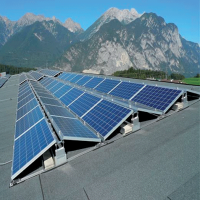 BALLAST STRUCTURE FOR FLAT ROOF 430W PANEL 10kW,SET 42343010F/BTR
BALLAST STRUCTURE FOR FLAT ROOF 430W PANEL 10kW,SET 42343010F/BTR-
Brand

Power 10000 Panels quantity 24 Roof type Flat roof or ground -
Brand
-
To the product
 BALLAST STRUCTURE FOR FLAT ROOF 430W PANEL 15kW,SET 42343015F/BTR
BALLAST STRUCTURE FOR FLAT ROOF 430W PANEL 15kW,SET 42343015F/BTR-
Brand

Power 15000 Panels quantity 35 Roof type Flat roof or ground -
Brand
-
To the product
 BALLAST STRUCTURE FOR FLAT ROOF 430W PANEL 20kW,SET 42343020F/BTR
BALLAST STRUCTURE FOR FLAT ROOF 430W PANEL 20kW,SET 42343020F/BTR-
Brand

Power 20000 Panels quantity 47 Roof type Flat roof or ground -
Brand
-
To the product
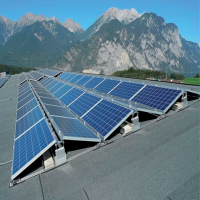 BALLAST STRUCTURE FOR FLAT ROOF 430W PANEL 3.6kW,SET 42343036F/BTR
BALLAST STRUCTURE FOR FLAT ROOF 430W PANEL 3.6kW,SET 42343036F/BTR-
Brand

Power 3600 Panels quantity 9 Roof type Flat roof or ground -
Brand
-
To the product
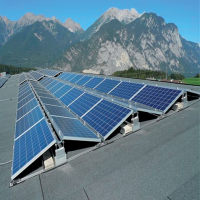 BALLAST STRUCTURE FOR FLAT ROOF 430W PANEL 30kW,SET 42343030F/BTR
BALLAST STRUCTURE FOR FLAT ROOF 430W PANEL 30kW,SET 42343030F/BTR-
Brand

Power 30000 Panels quantity 70 Roof type Flat roof or ground -
Brand
-
To the product
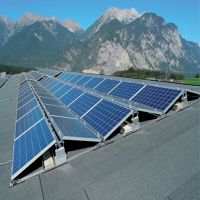 BALLAST STRUCTURE FOR FLAT ROOF 430W PANEL 3kW,SET 4234303F/BTR
BALLAST STRUCTURE FOR FLAT ROOF 430W PANEL 3kW,SET 4234303F/BTR-
Brand

Power 3000 Panels quantity 7 Roof type Flat roof or ground -
Brand
-
To the product
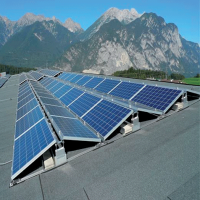 BALLAST STRUCTURE FOR FLAT ROOF 430W PANEL 5kW,SET 4234305F/BTR
BALLAST STRUCTURE FOR FLAT ROOF 430W PANEL 5kW,SET 4234305F/BTR-
Brand

Power 5000 Panels quantity 12 Roof type Flat roof or ground -
Brand
-
To the product
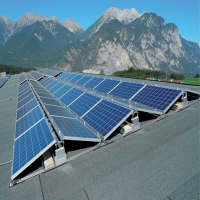 BALLAST STRUCTURE FOR FLAT ROOF 430W PANEL 6kW,SET 4234306F/BTR
BALLAST STRUCTURE FOR FLAT ROOF 430W PANEL 6kW,SET 4234306F/BTR-
Brand

Power 6000 Panels quantity 14 Roof type Flat roof or ground -
Brand
-
To the product
 BALLAST STRUCTURE FOR FLAT ROOF 430W PANEL 8kW,SET 4234308F/BTR
BALLAST STRUCTURE FOR FLAT ROOF 430W PANEL 8kW,SET 4234308F/BTR-
Brand

Power 8000 Panels quantity 19 Roof type Flat roof or ground -
Brand
-
To the product
 BALLAST STRUCTURE FOR FLAT ROOF 580W PANEL 10kW,SET 42358010F/BTR
BALLAST STRUCTURE FOR FLAT ROOF 580W PANEL 10kW,SET 42358010F/BTR-
Brand

Power 10000 Panels quantity 18 Roof type Flat roof or ground -
Brand
-
To the product
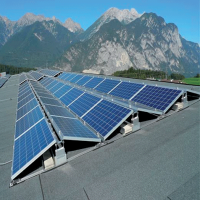 BALLAST STRUCTURE FOR FLAT ROOF 580W PANEL 15kW,SET 42358015F/BTR
BALLAST STRUCTURE FOR FLAT ROOF 580W PANEL 15kW,SET 42358015F/BTR-
Brand

Power 15000 Panels quantity 26 Roof type Flat roof or ground -
Brand
-
To the product
 BALLAST STRUCTURE FOR FLAT ROOF 580W PANEL 20kW,SET 42358020F/BTR
BALLAST STRUCTURE FOR FLAT ROOF 580W PANEL 20kW,SET 42358020F/BTR-
Brand

Power 20000 Panels quantity 35 Roof type Flat roof or ground -
Brand
-
To the product
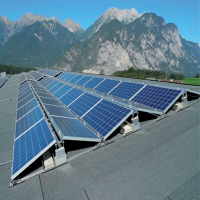 BALLAST STRUCTURE FOR FLAT ROOF 580W PANEL 3.6kW,SET 42358036F/BTR
BALLAST STRUCTURE FOR FLAT ROOF 580W PANEL 3.6kW,SET 42358036F/BTR-
Brand

Power 3600 Panels quantity 7 Roof type Flat roof or ground -
Brand
-
To the product
 BALLAST STRUCTURE FOR FLAT ROOF 580W PANEL 30kW,SET 42358030F/BTR
BALLAST STRUCTURE FOR FLAT ROOF 580W PANEL 30kW,SET 42358030F/BTR-
Brand

Power 30000 Panels quantity 52 Roof type Flat roof or ground -
Brand
-
To the product
 BALLAST STRUCTURE FOR FLAT ROOF 580W PANEL 3kW,SET 4235803F/BTR
BALLAST STRUCTURE FOR FLAT ROOF 580W PANEL 3kW,SET 4235803F/BTR-
Brand

Power 3000 Panels quantity 6 Roof type Flat roof or ground -
Brand
-
To the product
 BALLAST STRUCTURE FOR FLAT ROOF 580W PANEL 5kW,SET 4235805F/BTR
BALLAST STRUCTURE FOR FLAT ROOF 580W PANEL 5kW,SET 4235805F/BTR-
Brand

Power 5000 Panels quantity 9 Roof type Flat roof or ground -
Brand
-
To the product
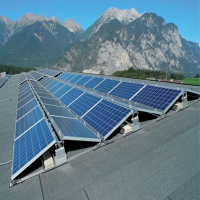 BALLAST STRUCTURE FOR FLAT ROOF 580W PANEL 6kW,SET 4235806F/BTR
BALLAST STRUCTURE FOR FLAT ROOF 580W PANEL 6kW,SET 4235806F/BTR-
Brand

Power 6000 Panels quantity 11 Roof type Flat roof or ground -
Brand
-
To the product
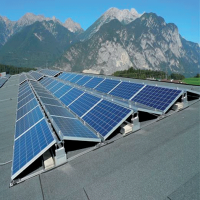 BALLAST STRUCTURE FOR FLAT ROOF 580W PANEL 8kW,SET 4235808F/BTR
BALLAST STRUCTURE FOR FLAT ROOF 580W PANEL 8kW,SET 4235808F/BTR-
Brand

Power 8000 Panels quantity 14 Roof type Flat roof or ground -
Brand
-
Oversize Product
To the product
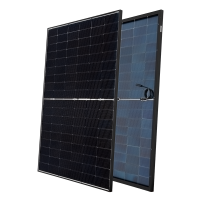 IP68BIFACIAL MONOCRYSTALLINE HALF-CUT SOLAR PANEL N-TYPE TOPCON 430W, BLACK 22% + 18% EFFICEIENCY 98SOL430M
IP68BIFACIAL MONOCRYSTALLINE HALF-CUT SOLAR PANEL N-TYPE TOPCON 430W, BLACK 22% + 18% EFFICEIENCY 98SOL430M-
Brand

Type MONO-CRYSTALLINE HALF CUT BIFACIAL Rated voltage 1500 V Peack power (Pmax) 430W Number of Cells 120(6x10x2) Dimensions (mm) 1722x1134x35 -
Brand
-
Oversize Product
To the product
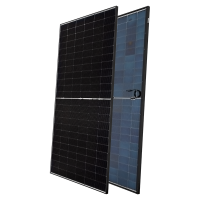 IP68BIFACIAL MONOCRYSTALLINE HALF-CUT SOLAR PANEL N-TYPE TOPCON 580W, BLACK 22,45% + 18% EFFICEIENCY 98SOL580M
IP68BIFACIAL MONOCRYSTALLINE HALF-CUT SOLAR PANEL N-TYPE TOPCON 580W, BLACK 22,45% + 18% EFFICEIENCY 98SOL580M-
Brand

Type MONO-CRYSTALLINE HALF CUT BIFACIAL Rated voltage 1500 V Peack power (Pmax) 580W Number of Cells 144(6x24) Dimensions (mm) 2278x1134x35mm -
Brand
Prices are VAT inclusive





